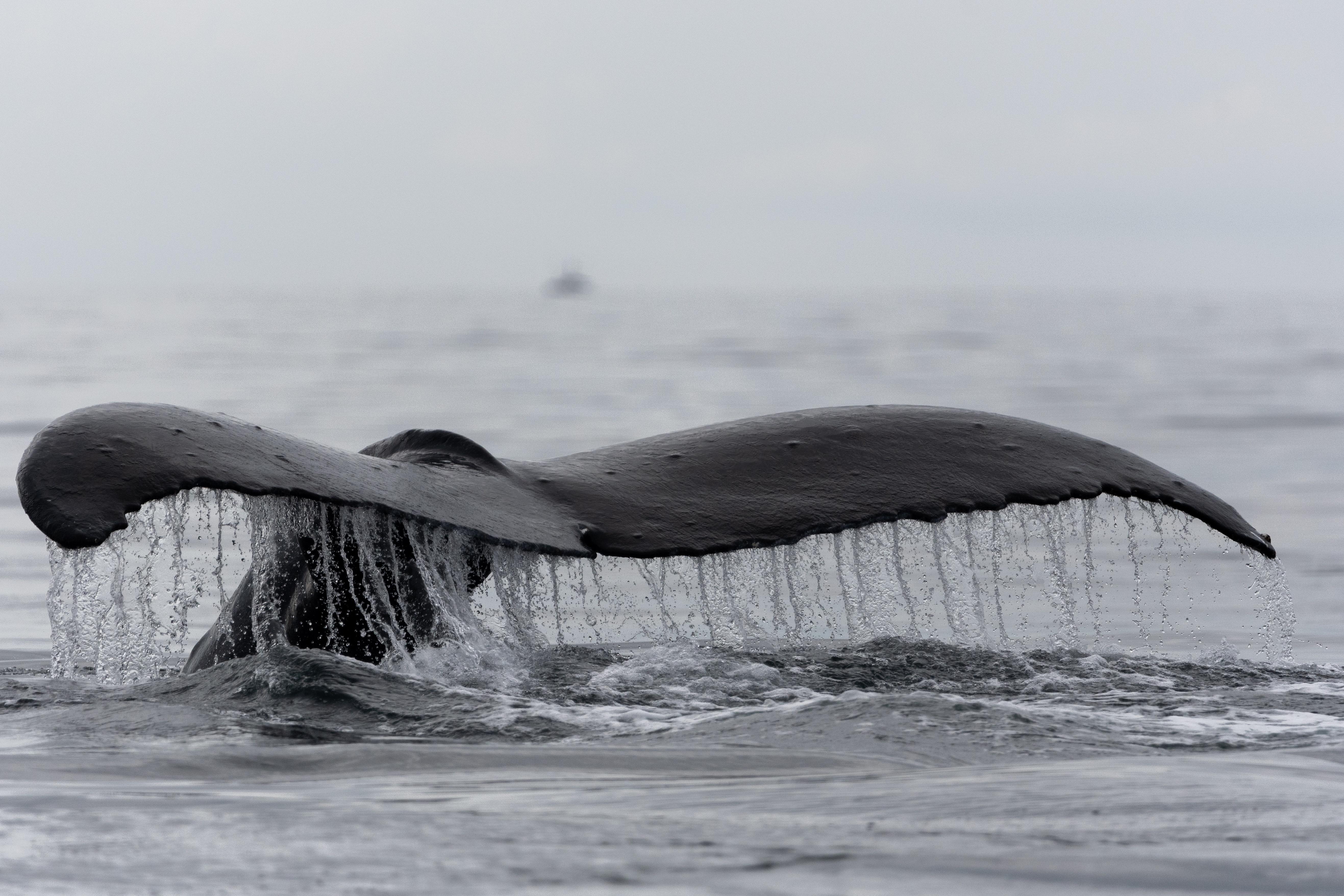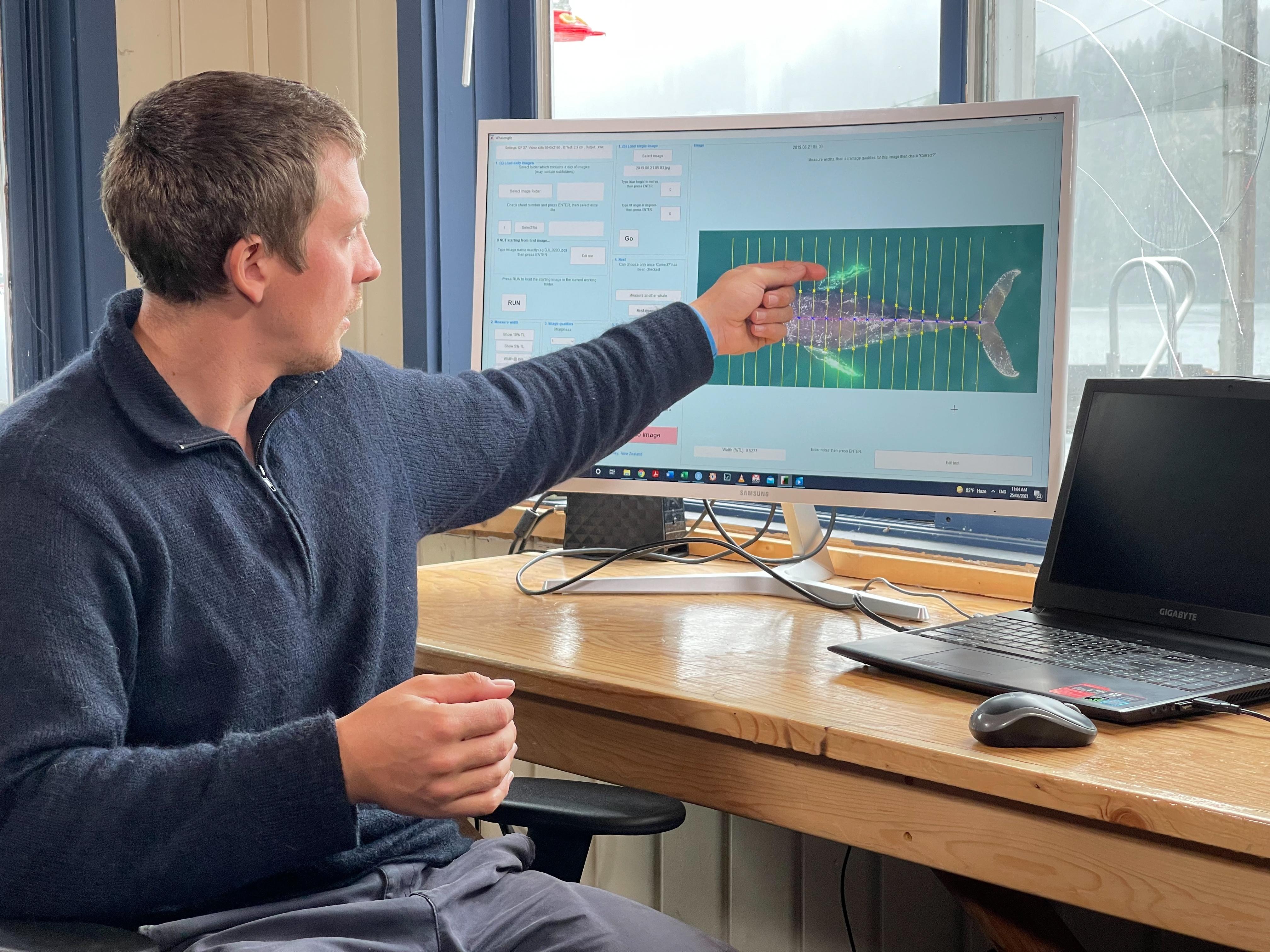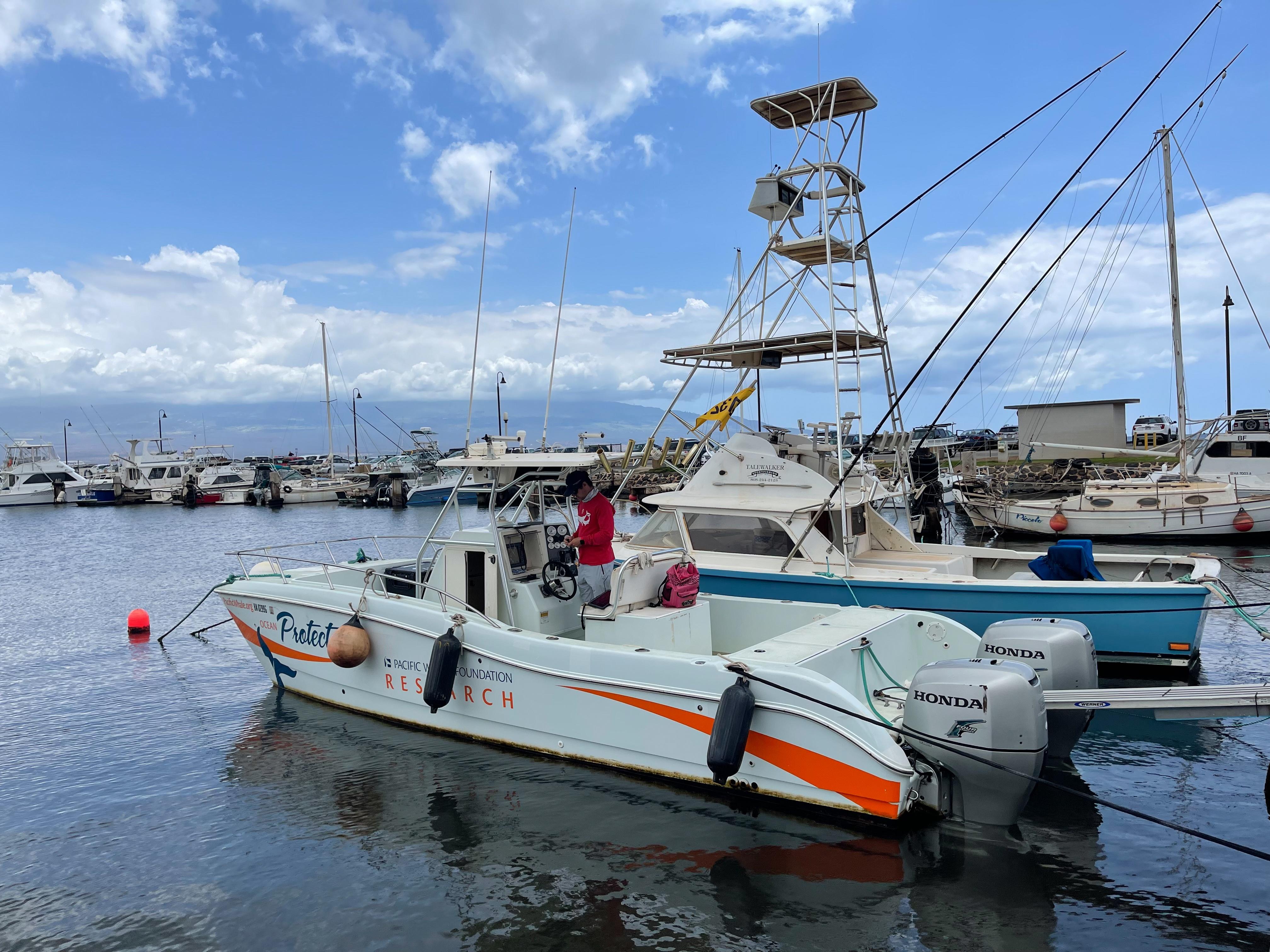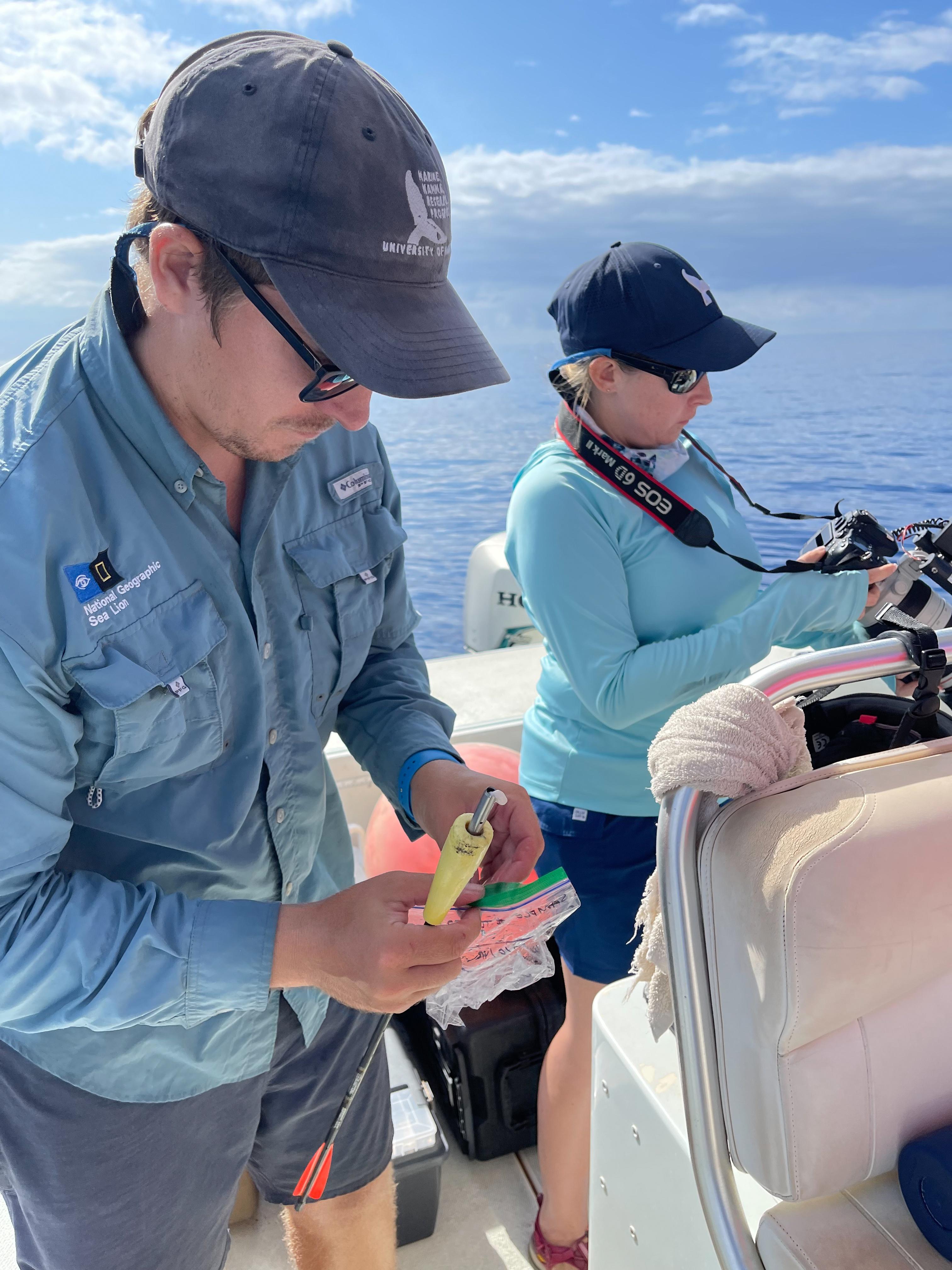Episode Photos
Humpback whales undertake some of the longest seasonal migrations in the animal kingdom. In the North Pacific, there is a distinct population of humpbacks, which breed in the Hawaiian Islands and feed in Alaska and British Columbia. Image taken under NMFS MMPA/ESA Permit # 19703.
Scientists with the Alaska Whale Foundation conduct research in a large portion of northern Southeast Alaska. Over the course of the summer whale season, the team conducts four to five multi-week surveys as part of the organization’s comprehensive Whale Health and Abundance Program.
While in Alaska, humpback whales feed on krill and a variety of forage fish, such as herring, capelin, salmon, pollock and sand lance. Image taken under NMFS MMPA/ESA Permit # 19703.
Ph.D. Student Martin van Aswegen (center), with the Marine Mammal Research Program at the University of Hawaiʻi at Mānoa, collaborates closely with the Alaska Whale Foundation each summer. Martin collects drone measurements of the humpbacks to better understand changes in their body condition.
As the whales surface and straighten their bodies, Martin van Aswegen captures high-resolution images of their body contours. The drone is equipped with a flat lens and a very precise height estimator, which make it possible to translate the pixels in an image into exact measurements. This allows Martin to measure the humpbacks' lengths and widths. Image taken under NMFS MMPA/ESA Permit # 19703.
Between 2018 and the end of the 2022 breeding season, Martin van Aswegen captured approximately 6300 drone measurements of over 5000 humpbacks in Hawaiʻi and Alaska. This includes repeat sightings of more than 120 individual animals, in both locations, within six months of each other.
While in Alaska, the whales need to gain as much weight as they can in preparation for their migration to the breeding grounds where they will be fasting. Image taken under NMFS MMPA/ESA Permit # 19703.
Alaska Whale Foundation Intern Annie Bartlett scans the horizon for humpbacks as part of the research team's efforts to count and identify whales in their study area.
Scientists can identify individual whales by looking at their tail flukes. Each fluke has a distinct trailing edge as well as a unique pattern of black and white pigmentation on its underside that, like a human fingerprint, is unique to that animal. Image taken under NMFS MMPA/ESA Permit # 19703.
Using specialized software, Martin van Aswegen is able to take his drone imagery and measure the total length of a whale, as well as its width across 20 different points on the body.
Humpbacks can be found in Alaska year-round, but their numbers drop significantly between November and April, when the majority of animals migrate to Hawaiʻi. It's known as a trickle migration because the entire population doesn't migrate all at once. Image taken under NMFS MMPA/ESA Permit #21321.
Pacific Whale Foundation Chief Scientist Jens Currie preps the boat for a day of research off Maui. While in Hawaiʻi, Martin van Aswegen teams up with collaborators from the Pacific Whale Foundation and the Marine Mammal Research Laboratory at the University of Hawaiʻi at Hilo.
Each January, February and March, the scientists conduct regular whale surveys in the leeward waters off Maui, where most of the whales tend to congregate during the breeding season. Image taken under NMFS MMPA/ESA Permit #21321.
Director of the Marine Mammal Research Program at the University of Hawaiʻi at Mānoa Lars Bejder, Ph.D. (left) keeps an eye on the whales while Martin van Aswegen is flying the drone.
A humpback whale calf frolicks next to its mother. Image taken under NMFS MMPA/ESA Permit #21321.
Pacific Whale Foundation Chief Biologist Stephanie Stack takes photo ID images of humpback whales as part of the collaborative research effort.
A humpback whale breaches in the leeward waters off Maui. Image taken under NMFS MMPA/ESA Permit #21321.
Pacific Whale Foundation Chief Scientist Jens Currie driving the research vessel during the research off Maui.
Imagine getting to observe these magnificent creatures up close as part of your work! Our film crew loved every minute of it. Image taken under NMFS MMPA/ESA Permit #21321.
Jens Currie looks at photo ID images captured in the field. The Pacific Whale Foundation and Adam A. Pack, Ph.D. each curate longterm photo ID catalogs that provide a thorough understanding of the individual whales that visit Hawaiʻi.
One pod type the scientists focus on during their research in Hawaiʻi is mother and calf pairs. The researchers aim to understand how nursing impacts the body condition of the animals since the mother is providing milk to the calf while she is fasting. Image taken under NMFS MMPA/ESA Permit #21321.
Another focus of the Hawaiʻi research is competition pods, where multiple males compete for the position next to a female that is ready to mate. Image taken under NMFS MMPA/ESA Permit #21321.
Also part of the team is Adam A. Pack, Ph.D., who runs the Marine Mammal Research Laboratory at the University of Hawaiʻi at Hilo. He collects small skin and blubber biopsies from each animal the scientists are identifying and measuring. Image taken under NMFS MMPA/ESA Permit #s 19655 & 21321.
Martin van Aswegen places a biopsy sample in a carefully labeled bag, while Stephanie Stack ensures she has images of the whale's tail fluke for photo identification.
The final samples will be shipped to Shannon Atkinson, Ph.D. at the University of Alaska Fairbanks, where they will be analyzed. Shannon is specifically looking at sex and stress steroids.
As of April 2022, Adam A. Pack, Ph.D. has collected nearly 500 biopsy samples as part of this project.
A sub-sample of the biopsies goes to the University of Hawaiʻi Health and Stranding Lab, where scientists are using stable isotope analysis to determine the animals' diet.
Scientists at the University of Hawaiʻi Health and Stranding Lab are also developing a new method of analyzing the fat cells in a whale’s blubber to correlate their size with the animal’s body measurements from the drone.





































